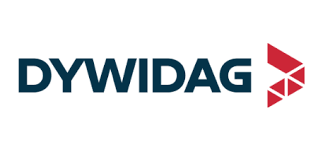Ai In Libraries Bursar
Published Date: 02 June 2025 | Report Code: ai-in-libraries-bursar
Ai In Libraries Bursar Market Size, Share, Industry Trends and Forecast to 2033
This comprehensive report examines the AI in Libraries Bursar market, offering detailed insights, data analysis, and future forecast from 2024 to 2033. It covers market size, CAGR evaluation, segmentation, regional insights, and trends driven by technological advancements. The analysis provides vital information for decision makers in educational institutions and technology integrators.
| Metric | Value |
|---|---|
| Study Period | 2024 - 2033 |
| 2024 Market Size | $1.80 Billion |
| CAGR (2024-2033) | 6.2% |
| 2033 Market Size | $3.14 Billion |
| Top Companies | LibraTech Innovations, BursarPro Solutions |
| Last Modified Date | 02 June 2025 |
Ai In Libraries Bursar (2024 - 2033)
Ai In Libraries Bursar Market Overview
Customize Ai In Libraries Bursar market research report
- ✔ Get in-depth analysis of Ai In Libraries Bursar market size, growth, and forecasts.
- ✔ Understand Ai In Libraries Bursar's regional dynamics and industry-specific trends.
- ✔ Identify potential applications, end-user demand, and growth segments in Ai In Libraries Bursar
What is the Market Size & CAGR of Ai In Libraries Bursar market in 2024?
Ai In Libraries Bursar Industry Analysis
Ai In Libraries Bursar Market Segmentation and Scope
Tell us your focus area and get a customized research report.
Ai In Libraries Bursar Market Analysis Report by Region
Europe Ai In Libraries Bursar:
Europe exhibits a balanced growth trajectory in the AI in Libraries Bursar market. With increased funding for digital transformation projects and enhanced cross-country collaborations, the market size is projected to rise from 0.55 in 2024 to 0.97 in 2033. European regulators and policy-makers are emphasizing data security and interoperability standards. This synergy between technological innovation and stringent compliance measures ensures steady development in the region.Asia Pacific Ai In Libraries Bursar:
In the Asia Pacific region, the market is witnessing dynamic growth as educational reforms and governmental funding for technology-driven systems encourage adoption of AI solutions. With the market size expanding from 0.32 in 2024 to 0.55 in 2033, advancements in cloud infrastructure and mobile technology accelerate implementation in both urban and rural educational settings. Local tech innovations and regional partnerships are further bolstering this growth, making Asia Pacific a competitive market with significant future potential.North America Ai In Libraries Bursar:
North America remains a dominant region with a significant market presence, where advanced technology integration and forward-thinking policy initiatives have led to market growth from 0.67 in 2024 to 1.17 in 2033. Institutions in this region are leveraging AI to optimize operational efficiencies and reduce administrative burdens, supported by robust investments and innovations. The mature market infrastructure and high demand for cutting-edge financial management tools sustain North America’s leadership position.South America Ai In Libraries Bursar:
South America is experiencing a gradual but steady adoption of AI in Libraries Bursar solutions, largely driven by cost-effective implementations and increased focus on educational modernization. The market size improvement from 0.10 in 2024 to 0.17 by 2033 reflects cautious optimism among institutions. Growing digital literacy and government incentive programs are helping to overcome legacy system constraints, thus promoting incremental investments in AI technology.Middle East & Africa Ai In Libraries Bursar:
The Middle East and Africa region is emerging as a promising market with gradual but consistent adoption of AI systems in library bursar operations. The market size, growing from 0.16 in 2024 to 0.27 in 2033, reflects increasing investment in educational reforms and digital infrastructure. Innovations driven by necessity and adaptive financing models are spurring market adoption, making the region an important area for future technological implementation and investment.Tell us your focus area and get a customized research report.
Ai In Libraries Bursar Market Analysis By Service Type
Global AI in Libraries Bursar Market, By Service Type Market Analysis (2024 - 2033)
The market analysis by service type focuses on educational segments such as universities, community colleges, technical schools, and online education providers. Universities lead the market with a size progression from 0.98 in 2024 to 1.72 in 2033, maintaining a steady share of 54.7%, which underscores their role in driving innovation and setting industry benchmarks. Community colleges follow with moderate growth supported by a size increasing from 0.38 to 0.65 and a consistent share near 20.88%. Technical schools, while smaller in scale, are demonstrating proportional growth with a size movement from 0.25 to 0.44 and a share of 14.1%, reflecting an emphasis on specialized education. Online education providers are also becoming significant, with market size growing from 0.19 to 0.32 and a corresponding share of 10.32%, influenced by the rapid digital transformation in education. Each service type segment contributes distinctively towards the innovation in AI-assisted bursar services, offering scalable and efficient solutions to a variety of institutional needs.
Ai In Libraries Bursar Market Analysis By User Type
Global AI in Libraries Bursar Market, By User Type Market Analysis (2024 - 2033)
User type segmentation in the AI in Libraries Bursar market is predominantly categorized by technological application profiles including machine learning, natural language processing, data analytics, and cloud computing. Machine learning, which saw a market size rise from 0.98 to 1.72 and holds a share of 54.7%, is central to predictive modeling for financial forecasting and resource allocation. Similarly, natural language processing, growing from 0.38 to 0.65 and maintaining a share of 20.88%, enhances user interactions through automated responses and chatbots. Data analytics, with a size move of 0.25 to 0.44 and a share of 14.1%, provides deep insights to improve decision-making processes. Cloud computing, although smaller with a size increment from 0.19 to 0.32 and a share of 10.32%, offers significant benefits in scalable data storage and real-time processing. These user types represent the diverse applications of AI in transforming the traditional bursar roles into efficient, data-driven operations.
Ai In Libraries Bursar Market Analysis By Technology
Global AI in Libraries Bursar Market, By Technology Market Analysis (2024 - 2033)
When analyzed from a technology standpoint, the market segments reveal a robust influence of breakthrough innovations that are redefining the operational landscape in academic financial management. The integration of machine learning algorithms enables predictive and adaptive financial management models, reducing errors and enhancing forecasting precision. Natural language processing supports automated student and faculty interactions, thereby reducing the administrative workload. Data analytics empowers institutions to gain insights into expenditure patterns, optimize budget allocations, and drive efficiency. Additionally, cloud computing facilitates scalable storage, security, and enhanced process integration. This technology-driven segmentation forms the backbone of modern financial operations in libraries and bursar offices, ensuring that institutions are not only responsive to current challenges but are also well-prepared for future advancements in automation and digital transformation.
Ai In Libraries Bursar Market Analysis By Budget Type
Global AI in Libraries Bursar Market, By Budget Type Market Analysis (2024 - 2033)
Budget type segmentation provides an in-depth look at the financial structures that support AI adoption in libraries. The operational budget segment, which has experienced growth from 1.11 in 2024 to 1.94 in 2033 and commands a share of 61.73%, indicates the priority given to upgrading existing systems and routine operational costs. Capital expenditure, moving from 0.44 to 0.77 with a share of 24.6%, reflects the investment in new technologies, infrastructure modernization, and innovative systems. Grant funding, though smaller in scale—from 0.25 to 0.43 with a share of 13.67%—provides essential support for research and experimental projects in AI integration. By understanding these budgetary components, institutions can tailor their financial planning to leverage both recurring and one-time investments, ensuring sustained deployment of AI technologies in bursar operations.
Ai In Libraries Bursar Market Trends and Future Forecast
Tell us your focus area and get a customized research report.
Global Market Leaders and Top Companies in Ai In Libraries Bursar Industry
LibraTech Innovations:
LibraTech Innovations is at the forefront of integrating AI solutions into library management systems. The company is renowned for its advanced algorithms that enhance financial forecasting, operational budgeting, and grant management in academic institutions across the globe.BursarPro Solutions:
BursarPro Solutions specializes in comprehensive AI-driven bursar services. With a focus on reducing manual processes and improving data accuracy, BursarPro has established itself as a trusted partner for universities and colleges seeking to modernize their financial administrative systems.We're grateful to work with incredible clients.









FAQs
What is the market size of ai In Libraries Bursar?
The ai-in-libraries-bursar market is projected to reach $1.8 billion by 2033, growing at a CAGR of 6.2%. This reflects a steady increase in the integration of AI in library management systems over the coming years.
What are the key market players or companies in this ai In Libraries Bursar industry?
Key players in the ai-in-libraries-bursar industry primarily include established library management services, AI technology providers, and software firms focusing on educational tools, all contributing to the advancement of library financial management.
What are the primary factors driving the growth in the ai In Libraries Bursar industry?
Growth in the ai-in-libraries-bursar industry is driven by increasing demand for efficient financial management, the adoption of AI for streamlined operations, and growing investment in educational technologies by institutions.
Which region is the fastest Growing in the ai In Libraries Bursar?
North America is projected to be the fastest-growing region in the ai-in-libraries-bursar market, expanding from $0.67 billion in 2024 to $1.17 billion by 2033, reflecting significant advancements in technology adoption.
Does ConsaInsights provide customized market report data for the ai In Libraries Bursar industry?
Yes, ConsaInsights offers customized market report data tailored specifically for the ai-in-libraries-bursar industry to meet the unique needs of our clients and support strategic decision-making.
What deliverables can I expect from this ai In Libraries Bursar market research project?
Deliverables from the ai-in-libraries-bursar market research project include detailed market analysis, trend reports, competitive landscape assessments, and actionable insights to aid business growth.
What are the market trends of ai In Libraries Bursar?
Current trends in the ai-in-libraries-bursar market include increasing automation in financial processes, a rise in data analytics for decision-making, and a growing focus on user-friendly interfaces for end-users.
